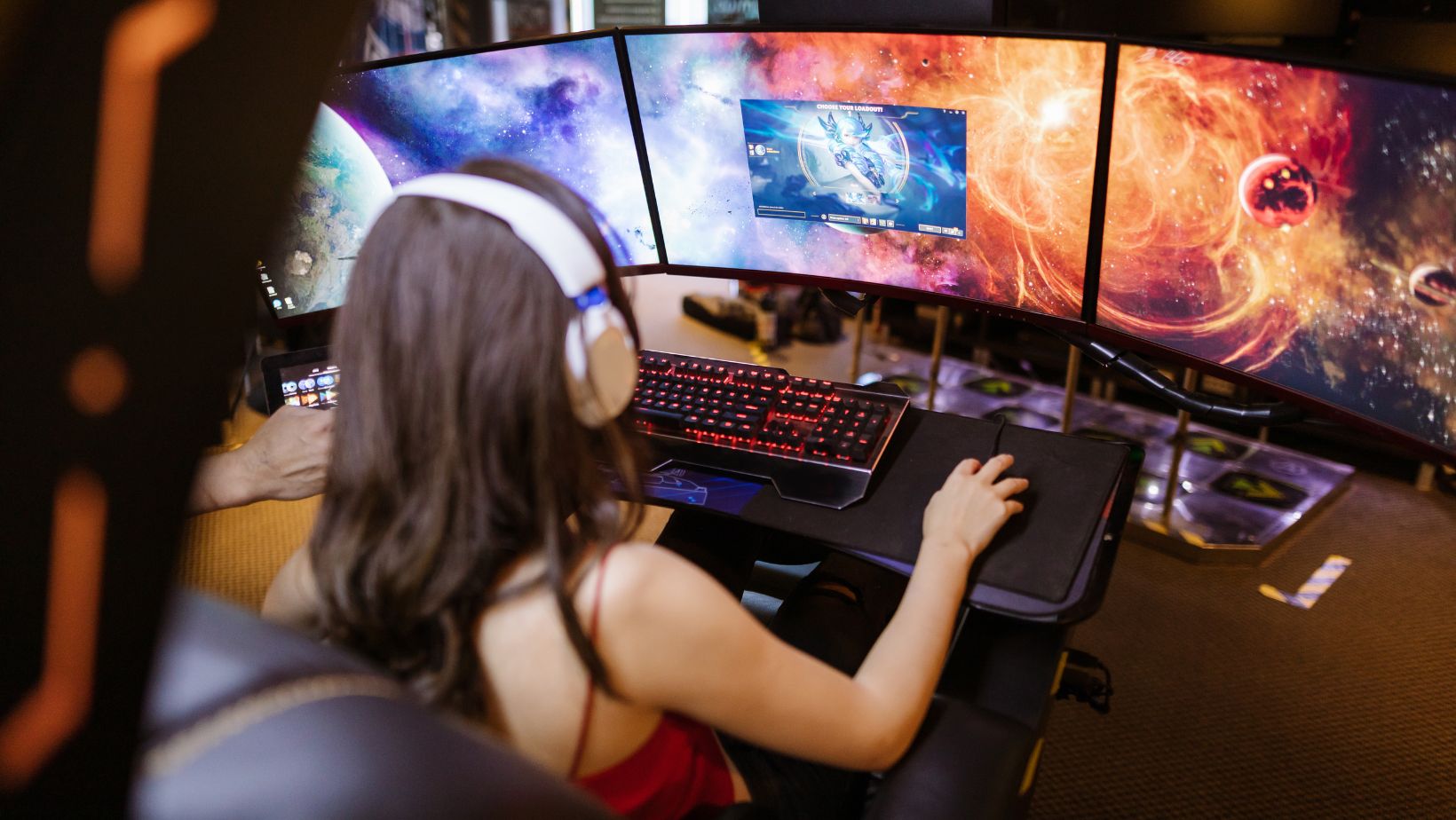
We remember the weapons. The plot twists. That soundtrack that still plays in our heads when we boot up the game menu. But what about the table your character leaned on during an exposition dump? Or that threadbare couch where a wounded NPC spilled their secrets?
Between 2010 and 2012, as PCs flexed their growing graphic muscles and game worlds ballooned in size and complexity, something subtle happened: the furniture got better. It wasn’t just visual dressing—it became part of the conversation. Whether you were customizing a Sim’s bachelor pad, navigating a haunted manor, or ducking behind a scorched desk mid-firefight, those in-game chairs, beds, and benches started to matter. They grounded stories. They whispered about the worlds that spawned them.
This isn’t just about polygon counts or bump maps. This is about storytelling through stools and immersion via upholstery. Welcome to a stroll through virtual kitchens, courtrooms, bunkers, and nightmares.
1. The Loading Screen Lounge
Before players even took control, they sat down—virtually.
In Mass Effect 2 (2010), the Normandy’s command center pulsed with glassy, clinical chairs that looked more like dental equipment than seating. The sleekness was deliberate. These weren’t comfort zones. They were stations of discipline. The message? You’re not relaxing here. You’re commanding. You’re calculating.
Then there was Skyrim (2011). As you waited out a loading screen, sometimes a throne appeared. Worn wood, iron embellishments, fur throws. You hadn’t even stepped into a dungeon yet, but already the world whispered: here, power sits on splinters.
Game menus were sneak previews of a game’s soul. Developers knew the shape of a chair could say more than the voiceover narration ever would. The vibe of a game often started with where it asked you to metaphorically sit.
2. War Rooms and Worn Sofas
First-person shooters often blur into one another—similar HUDs, shared sound design, recycled mission tropes. But the furniture? That’s where the texture sneaks in.
In Call of Duty: Black Ops (2010), the interrogation chair was a recurring motif. The whole framing device of the game revolved around it. It wasn’t flashy. It was wooden, bolted down, a bit too real. It grounded the fantastical story in a specific brutality. That chair wasn’t just scenery—it was the frame.
Meanwhile, in Metro 2033 (2010), Soviet subway tunnels teemed with makeshift furniture. Benches built from doors, beds carved from scrap. You couldn’t sit on most of them, but their presence was loud. They told you what people salvaged when the bombs fell. They showed what still mattered: sleep, warmth, a place to sit and talk or grieve.
These environments didn’t rely on journal entries to tell their stories. A collapsed crib next to a burnt-out lamp told you enough.
3. The Dystopian Couch: Post-Apocalyptic Domesticity
End-of-the-world settings often use rust, ruins, and rubble. But smart games inserted something more intimate: the furniture of a life now gone.

In Fallout: New Vegas (2010), it was the decayed mid-century furniture—coffee tables and armchairs straight from 1950s catalogs, now scorched and sun-bleached. That contrast, the clean lines of Americana in a dead Mojave, hit harder than any monologue about nuclear devastation.
Deus Ex: Human Revolution (2011) did something different. Its chairs were too stylish for comfort—curved backs, glowing bases, minimalist flair. They were the furniture of a future that had already sold its soul. They evoked corporate showrooms, but set against protest graffiti and poverty-stricken neighborhoods, they made a point. The world had advanced technologically but regressed socially. The furniture mirrored that contradiction.
It’s no accident. Design teams consciously pulled from real-world eras to give us emotional touchpoints in unfamiliar futures.
4. Cozy Corners in Horror Games
Horror games thrive on spatial unease. And nothing does that better than furniture that should feel familiar—but doesn’t.
In Amnesia: The Dark Descent (2010), wardrobes weren’t just antique decoration. They were hiding spots. The fact that you could climb into one and cower turned every similar piece you saw into a question: is this just a cabinet, or is something about to hunt me?
Dead Space 2 (2011) took it further. Hospital gurneys, examination tables, cold metal chairs. Medical furniture—supposedly for healing—became sinister. Their stillness made them dangerous. You never knew which one would suddenly house a twitching corpse.
These pieces played with the uncanny. They hinted at care, routine, maybe even love. But in the flickering light of horror, they warped into threats. Just like the monsters, they were twisted versions of what used to be human.
5. Fantasy Thrones and Tavern Benches
High fantasy tends to swing between grandiosity and grounded charm. Its furniture reflects that duality.
Dragon Age II (2011) scaled back the opulence of its predecessor. Thrones were less ornate but still symbolic. Who sat where—who stood—told you everything about court dynamics. No exposition needed. Just chairs.
In The Witcher 2: Assassins of Kings (2011), inns and courtrooms brimmed with understated seating: low stools, backless benches, creaky wooden tables. Yet every item seemed placed with purpose. You didn’t just walk into a pub; you entered a space where deals were struck, secrets whispered, eyes watched from corners.
These games understood that worldbuilding doesn’t always come from dragons or quests. Sometimes, it comes from a bench that’s been worn down by a hundred mercenaries nursing a hundred ales.
6. Player Homes: Furniture as Identity
There’s a unique magic when a game lets you place the chair.
In The Sims 3: Late Night (2010) and Generations (2011), players weren’t just selecting beds and barstools—they were shaping social ecosystems. That sectional sofa in the middle of your Sim’s living room? It wasn’t just about comfort. It was about inviting a crowd. Hosting drama. Telling the game, this is who I am.

Skyrim pushed that further with its Hearthfire expansion (2012). Now, you could build your home. Choose the alchemy table over the enchanting one. Hang pelts or install bookshelves. That choice wasn’t cosmetic. It said something about what kind of Dragonborn you were.
And in games like these, furniture wasn’t just decor—it was declaration. One moment you’re selecting a dining table. Next thing you know, you’re subconsciously aligning with a lifestyle, a class, even a moral path. It was no longer just about completing a quest. It was about building a life.
And let’s be honest: the inclusion of restaurant furniture packs in extra meaning when a fantasy tavern or space diner uses seating to signal hierarchy, history, or mood. These weren’t fast food stools. These were carved seats with stories.
7. Why It Mattered: The Design Behind the Décor
So what changed in those years? Why did chairs suddenly matter?
Part of it was technological. Engines like Unreal Engine 3 and Frostbite matured, allowing for more detailed, interactable environments. Furniture moved from static props to elements with physics, animation, and sometimes destructibility. A table wasn’t just there—it flipped, burned, crumbled.
But there was also a shift in intention. Developers started treating interiors as extensions of lore. A medieval throne room wasn’t just a space—it was a statement about that kingdom’s priorities, wealth, even moral compass.
Some design docs from this period (where available) mention “environmental storytelling” as a key goal. The phrase sounds fancy, but it just means what we’ve already known: a scorched mattress or crooked stool tells us more than a dialogue tree ever could.
Designers weren’t just filling rooms. They were writing history with every bookshelf and nightstand.
Sit Down, Look Around
There’s a small table in Skyrim’s Riverwood Inn. It’s plain. Wood. A tankard sits atop it, half-tipped. I remember it more vividly than some quests. Maybe because it looked like it had been used. Like someone just stepped away. It wasn’t flashy. But it made the room feel real.
That’s the magic of game furniture from 2010–2012. Not every piece was memorable on its own. But together, they created spaces that felt whole. Not just seen, but inhabited.
So next time you’re raiding a dungeon or sneaking through a bunker, pause. Look at the chair in the corner. Think about who last sat there—and why they might not have gotten back up.
Because furniture in games? It never just sits there.












